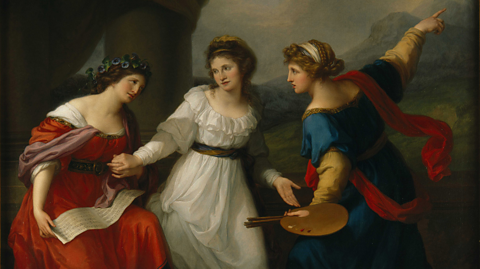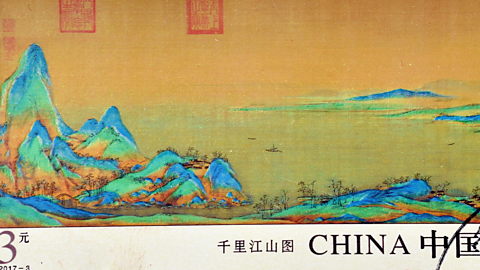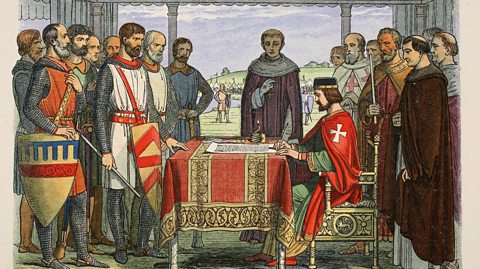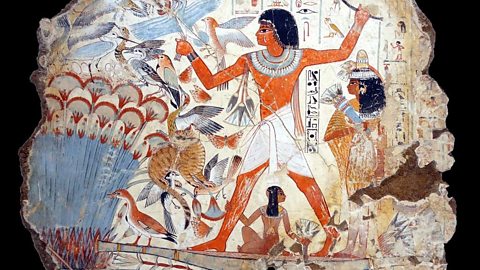ÔÇťIt took me four years to paint like Raphael, but a lifetime to paint like a child.ÔÇŁ
Those were the words of Pablo Picasso in a letter he wrote in 1956. Picasso is regarded as one of the worldÔÇÖs most recognisable child art prodigies and was said to have out-mastered his art teacher father, Jos├ę, by the age of 13.
Over the centuries, a handful artists have been documented and celebrated for their exceptional creativity at a young age - with some reaching international acclaim into adulthood. From completing masterpieces to painting aristocrats, 91╚╚▒Č Bitesize takes a look at three painters who put their stamp on the art world at a very young age.

Angelica Kauffman
Born in 18th Century Switzerland, Angelica Kauffman was one of the most prominent artists of her time. Trained by her father, the muralist Johann Joseph Kauffman, Angelica showed her artistic talent as early as age four and became his assistant several years later.
In her early teens, Angelica painted portraits of bishops. By the age of 13 she was asked to paint the wife of the Duke of Modena in Italy. The Duke was very pleased with the result, something which helped catapult her popularity as a painter among royalty.
Throughout the course of her career, Angelica enjoyed success in several countries, including Austria, Italy and England. She also painted the celebrities of her day, ranging from actors and writers to aristocrats and socialites.
As well as being an acclaimed artist, Angelica was also a talented musician and polyglot who was fluent in four languages - including German and French.
In 1768, she was one of the two female painters who were founding members of the world renowned Royal Academy in London, along with Mary Moser.
Angelica soon developed an international reputation for her portraiture, landscape, decoration and history painting. At the height of her fame she was one of the most sought-after artists in Europe. One of her contemporaries, a Danish ambassador to the city, remarked ÔÇśthe whole world is Angelica mad!ÔÇÖ.

Wang Wimeng
Not a lot is known about Wang Wimeng, a Chinese painter from the The Northern Song Dynasty ruled ancient China between 960 and 1127. period. In fact, only one of his art works survives. ÔÇśA Thousand Li of Rivers and MountainsÔÇÖ was completed in the 12th Century when Wang was just 18 years old. Wang completed the painting under the guidance of Huizong, the Emperor of China at the time - who was an accomplished painter and calligrapher himself. The piece is considered a masterpiece of traditional Chinese painting.
The silk handscroll painting depicts a vast blue-and-green country landscape and measures around 12 metres long (39 ft). Across nine panels, it details the path of rivers making their way through a mountainous backdrop, with cottages, water mills and bridges huddled within the valleys. According to the Chinese calligrapher and politician Cai Jing, it took Wang less than half a year to finish.
Considered a child prodigy, historical records suggest Wang entered the Imperial Painting Academy as an apprentice when he was in his early teens. He died at the age of 23, five years after producing the piece.
The work is now held in the collection of the Palace Museum in Beijing, China. In 2017, stamps of ÔÇśA Thousand Li of Rivers and MountainsÔÇÖ were printed to celebrate the 900-year-old artwork.

Jan Lievens
Noted for his innovative approach as a as a painter, draughtsman, and printmaker, Jan Lievens was from Leiden, Netherlands. Born in 1607, he began artistic training when he was just eight years old and was said to have ÔÇśastoundedÔÇÖ art lovers in his hometown by the age of 12.
A A period during the 17th Century where Dutch trade, science and art were among the most acclaimed in Europe. painter, his style has been defined as A style of art which became popular in the 17th Century and is known for exploring dramatic themes and being full of movement. art. His paintings typically explore religious, mythological or allegorical subjects in the form of portrait or landscape scenes.
During his lifetime, he also shared a competitive creative relationship with his friend and collaborator, fellow Dutch artist Rembrandt. The strong mutual influence between the two is clear.
They were both born in the same city, just over a year apart, lived near one another, studied with the same master and are even thought to have even shared a studio at one point.
Lievens travelled for his craft, spending time in England and living in Antwerp, Belgium from 1635 to 1653.
In later life, he returned to Holland and took residence in Amsterdam where he worked as a portrait painter.
This article was published in July 2024

Can you guess the historical event from the art work?
From royal weddings to brutal battles, can you guess the historical event from the artwork?

Prime Minister at 24?: Five world-record breaking youngest evers
91╚╚▒Č Bitesize takes a look at five record-breaking young people and their extraordinary achievements.

Three incredible ancient frescoes that arenÔÇÖt in Pompeii
From Egypt to Italy to India, join 91╚╚▒Č Bitesize as we explore three stunning ancient frescoes that aren't in Pompeii.
